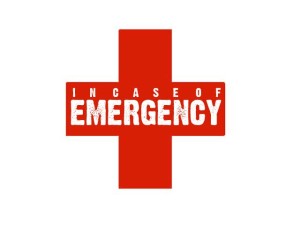Written by Dr. Heather Garcia, Kleinpeter Equine Veterinary Services
Original Publish Date April 2013
 Before you know what’s abnormal, here’s a review of what’s normal for an adult horse:
Before you know what’s abnormal, here’s a review of what’s normal for an adult horse:
- Rectal Temperature: 99.5⁰F – 101.5⁰F (Temps over 103 indicate a fever)
- Heart rate: 30-42 beats per minute (elevated HR’s at rest can indicate pain or distress)
- Respiration rate: 12-20 breaths per minute (elevated RR’s and effort can indicate respiratory distress, pain, and other problems.)
- Gut sounds: 2-3 per minute on both sides (an increase, decrease, or lack thereof could indicate colic or other GI disturbances)
- Capillary Refill Time (the time it takes for color to return to gum tissue after pressing and releasing it with your thumb): less than 2 seconds (A prolonged CRT can indicate dehydration, shock, severe blood loss, etc.)
- Mucous Membrane Color (color of the tissues of the gums, nostrils, conjunctiva, and inner lips of the vulva): pink (red, pale pink, white, yellow, bluish purple can indicate specific problems)
- Mucous Membrane/Gum wetness: your finger should easily glide over the wet slippery surface of the gums (tacky or dry gums indicate dehydration)
- Skin Pliability: the skin over the neck or upper eyelid should snap back into place when pinched and released (A prolonged skin tent indicates dehydration)
- Defecation & Urination: color, consistency, and volume of manure and urine should be typical of your horse (Any change in color, consistency, amount, lack thereof, or straining indicates a problem)
Be prepared before an emergency occurs:
- Try to establish a good relationship with a local veterinarian (Ex. through wellness exams, vaccinations, dental exams/floating, etc.) prior to an emergency shall one arise.
- Have your veterinarian’s phone number on speed dial, in your trailer, and posted in your barn.
- Know what’s normal for your horse (when they normally lay down, how much water they drink, etc.)
- Always have a plan to transport your horse if an emergency arises. If you don’t own a truck and trailer (in operational order), have a list of friends who would be willing to haul for you.
- Know how to get to the vet clinic. And, know in advance a direct route to the closest surgical center in case you ever need to transport your horse in a hurry.
- Keep a first aid kit complete with bandaging material both in your barn and in your trailer. A basic first aid kit should include: clean and sterile bandaging material (vet wrap, cotton rolls, gauze pads, adhesive tape, leg wraps, duct tape, etc.), scissors, rectal thermometer, stethoscope, gloves, antiseptic/antibacterial solution and scrub, flashlight and batteries, wire cutters. Some owners also like to have a dose of Bute or Banamine on hand.
What to do when an emergency arises:
- Do not panic. The calmer you are, the calmer your horse will be.
- Restrain your horse, and move the animal to a safe location if possible.
- Assess your horse’s injury or sudden illness and vital signs.
- Get help from a family member or friend if needed to help hold the horse, call the vet, get supplies from the first aid kit, etc.
- Notify the veterinarian right away. Many injuries and illnesses can more easily be treated and with a better prognosis the sooner the veterinarian is notified and treatment is begun. (Exs. Colics are easier to treat at the first sign then they are if you wait hours for your horse to get better on his own. And, lacerations can only be successfully sutured within the first few hours of the injury occurring.)
- Be prepared to give detailed information to the veterinarian about the horse’s condition, vital signs, location of a laceration, where the horse is located, etc.
- Listen closely and follow your veterinarian’s instructions. Then head to the vet clinic, or wait for them to arrive.
- Do not administer any drugs or attempt any treatments unless specifically instructed to do so by your vet.
If your horse exhibits any of the following, call your vet immediately:
- Colic (Don’t wait on these, call on the very first sign. Ex. Off feed)
- An injury with bleeding that won’t stop
- Obvious or suspected fractures
- A cut or laceration that require sutures
- Abrasions or lacerations over joints
- Sudden lameness (Unwilling to move, odd stance, head nod)
- Respiratory distress
- Choking (distressed horse with feed material coming out of the nose)
- Downed horse
- Seizures
- Tying Up
- Diarrhea
- All eye injuries (including squinted, swollen and, tearing eyes)
- Fever (temperatures above 103)
- Foreign bodies (such as a nail found in a hoof-do NOT pull the nail)
- Sudden lethargy or depression
If you aren’t sure if you have an emergency, call your vet and ask!





